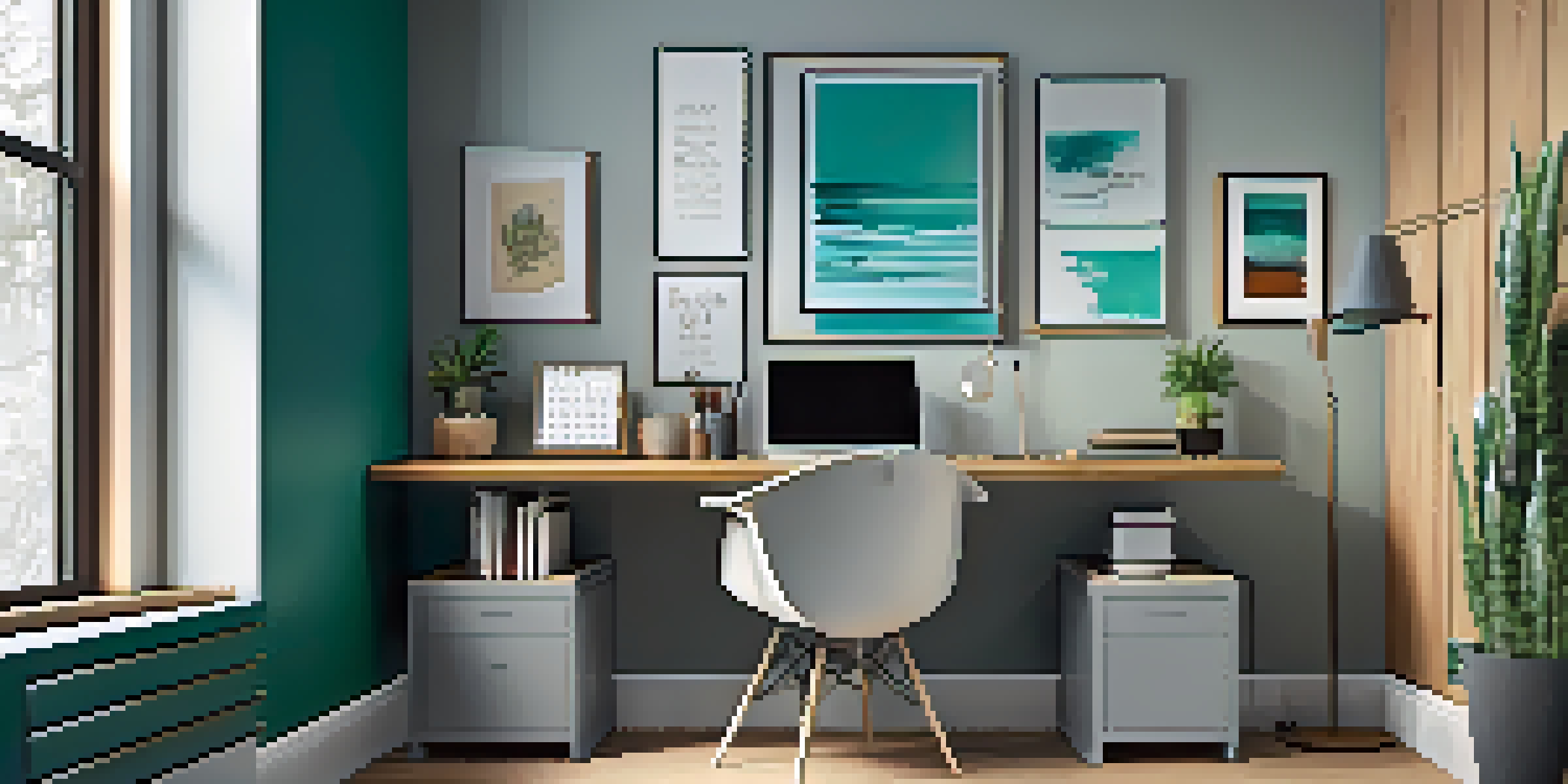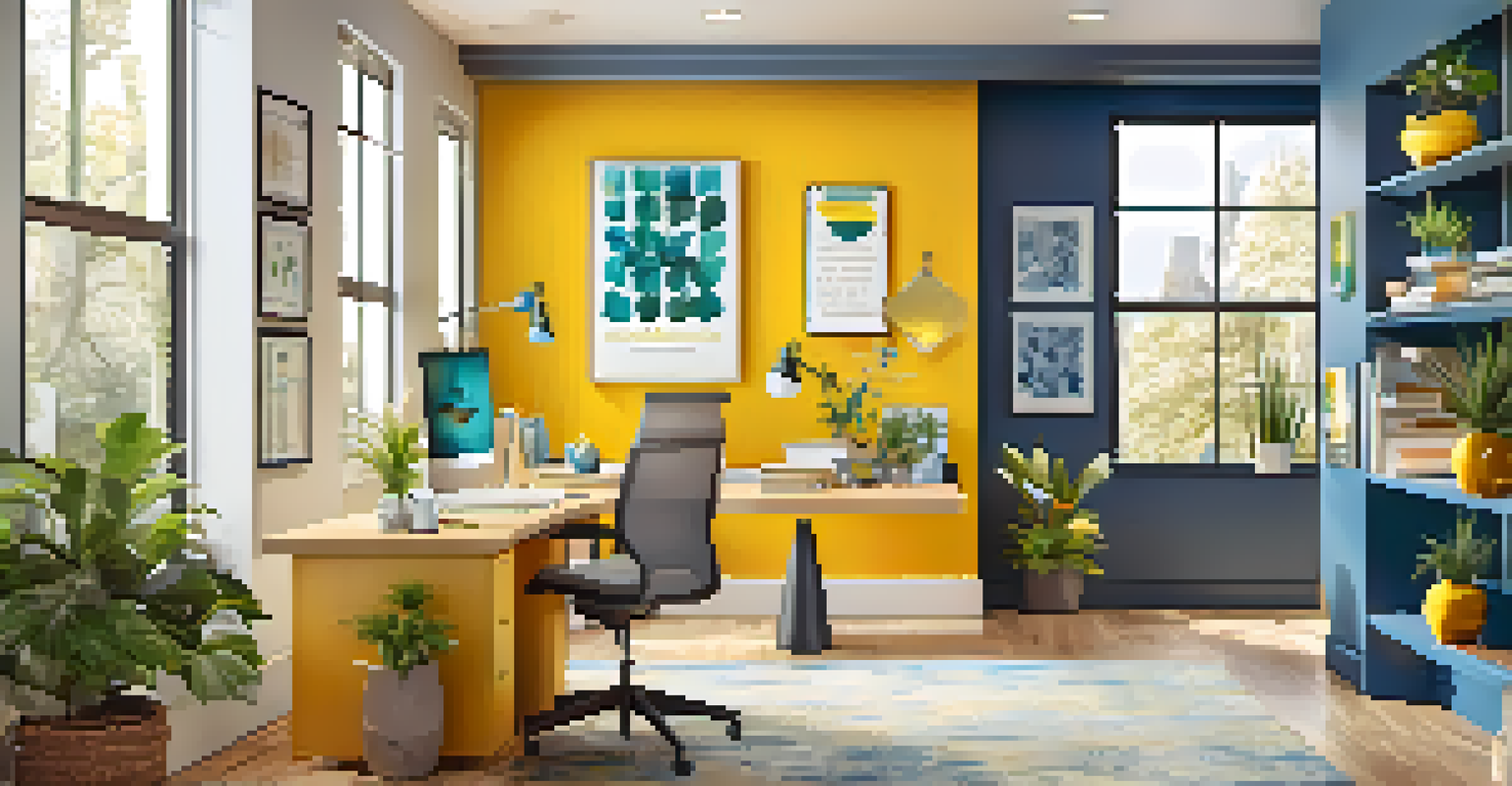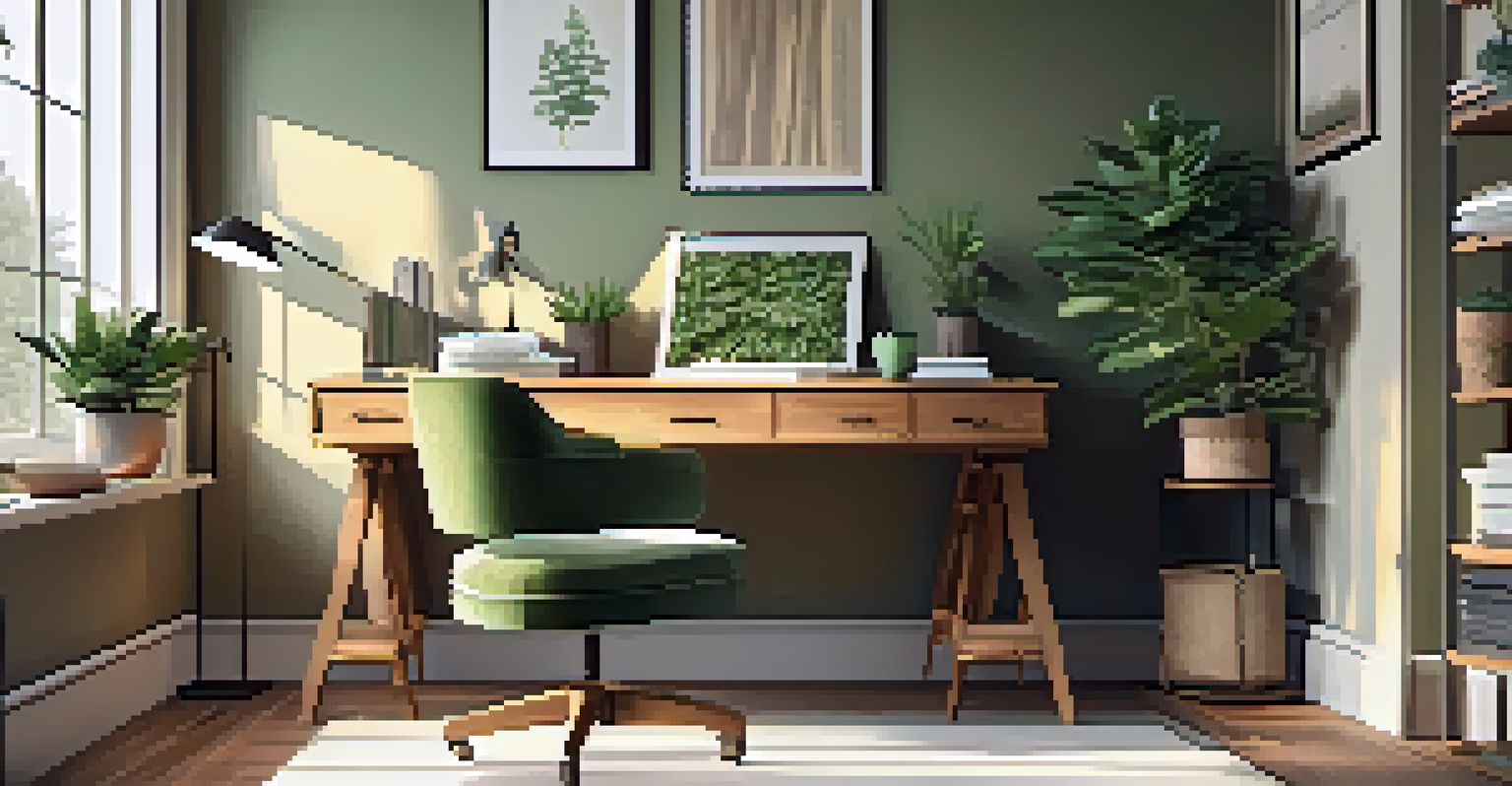The Role of Color in Home Office Design for Productivity

Understanding the Psychological Impact of Color
Colors can significantly influence our mood and productivity levels. For instance, blue is often associated with calmness and focus, while yellow can inspire creativity and energy. Recognizing these effects can help you choose the right palette for your workspace.
Colors are the smiles of nature.
Imagine walking into an office painted in a calm, soothing blue. You might feel more relaxed and ready to tackle tasks. Conversely, a bright yellow accent wall might spark innovative ideas and enthusiasm, making it easier to brainstorm and create.
By understanding the psychological impact of color, you can create an environment that aligns with your work style. This awareness can guide your choices in paint, decor, and even furniture, ultimately enhancing your productivity.
Choosing a Color Palette That Fits Your Work Style
Every individual has a unique work style, and your color palette should reflect that. If you thrive in a structured environment, consider neutral tones paired with pops of motivational colors. This balance can create harmony and keep you focused.

On the other hand, if you prefer a more dynamic approach to work, vibrant colors like orange or green can energize your space. These colors can stimulate creativity and encourage a more flexible mindset, ideal for brainstorming sessions or creative tasks.
Colors Influence Mood and Productivity
The psychological impact of color can significantly enhance your workspace by promoting calmness, creativity, and focus.
Ultimately, selecting a color palette that aligns with your personal work style can make your home office a place where you feel both comfortable and inspired. Tailoring your environment to your preferences can lead to increased productivity and satisfaction.
The Role of Natural Light in Color Perception
Natural light plays a crucial role in how colors appear in your home office. A room bathed in sunlight can make colors pop and create a more inviting atmosphere. This can enhance your mood and productivity levels throughout the day.
Color is the keyboard, the eyes are the harmonies, the soul is the piano with many strings.
For example, a sunny yellow wall may feel warm and energizing during the day, but appear dull and uninviting at night. Maximizing natural light not only benefits color perception but also supports your overall well-being by regulating your circadian rhythms.
When designing your office, consider the placement of windows and how they interact with your chosen colors. This thoughtful approach can help you create a workspace that feels vibrant and alive, even during the grayest days.
Incorporating Accent Colors for Motivation
Accent colors can serve as motivational boosts in your home office. These are typically bolder shades used sparingly to draw attention to particular areas or elements, like a motivational quote or a vision board. They can inspire and energize you throughout your workday.
For instance, a calming blue office can be accented with bright orange accessories to stimulate creativity and enthusiasm. This contrast can break the monotony and keep your energy levels high, especially during long work sessions.
Personalize Your Workspace with Color
Infusing personal significance into your color choices can create a more motivating and comfortable home office environment.
When incorporating accent colors, consider your personal preferences and the tasks you perform most often. A few well-placed accessories can transform your workspace and keep you motivated without overwhelming the primary color scheme.
Creating a Balanced Color Scheme
A balanced color scheme is vital for creating a cohesive home office that promotes productivity. This involves combining a few main colors with complementary shades to create visual harmony. It’s essential to avoid overwhelming yourself with too many colors.
For example, you might pair soft gray walls with vibrant teal accents and warm wooden furniture. This combination can evoke a sense of calmness while still being engaging and lively. Balance helps maintain focus and clarity, crucial for productive work sessions.
Experimenting with different combinations can help you find the perfect balance for your workspace. Remember, the goal is to create a visually appealing environment that feels comfortable and conducive to productivity.
Color Trends in Home Office Design
Staying updated on color trends can inspire your home office design. Each year, new palettes emerge that reflect contemporary aesthetics and psychological insights. Incorporating these trends can keep your workspace feeling fresh and modern.
For instance, earthy tones have gained popularity, as they evoke a sense of grounding and connection with nature. These colors can create a calming atmosphere, perfect for focusing on tasks and minimizing distractions.
Natural Light Enhances Color Perception
Maximizing natural light in your office can elevate color vibrancy and contribute to improved well-being and productivity.
By embracing current trends, you can create a home office that not only meets your productivity needs but also resonates with your personal style. A stylish workspace can boost your motivation and make you excited to get to work every day.
Personalizing Your Space with Color
Personalization is key to making your home office a true reflection of you. This can include adding colors that hold personal significance or inspire joy. Whether it's a favorite shade from childhood or a color that reminds you of a happy memory, infusing your personality into your workspace can enhance your productivity.
Imagine surrounding yourself with colors that evoke positivity and motivation, like a bright green that reminds you of nature or a calming lavender that helps you relax. These personal touches can create a workspace that feels uniquely yours.

Ultimately, personalizing your space with meaningful colors can foster a sense of belonging and comfort. This connection to your environment can significantly impact your focus and drive to accomplish tasks.